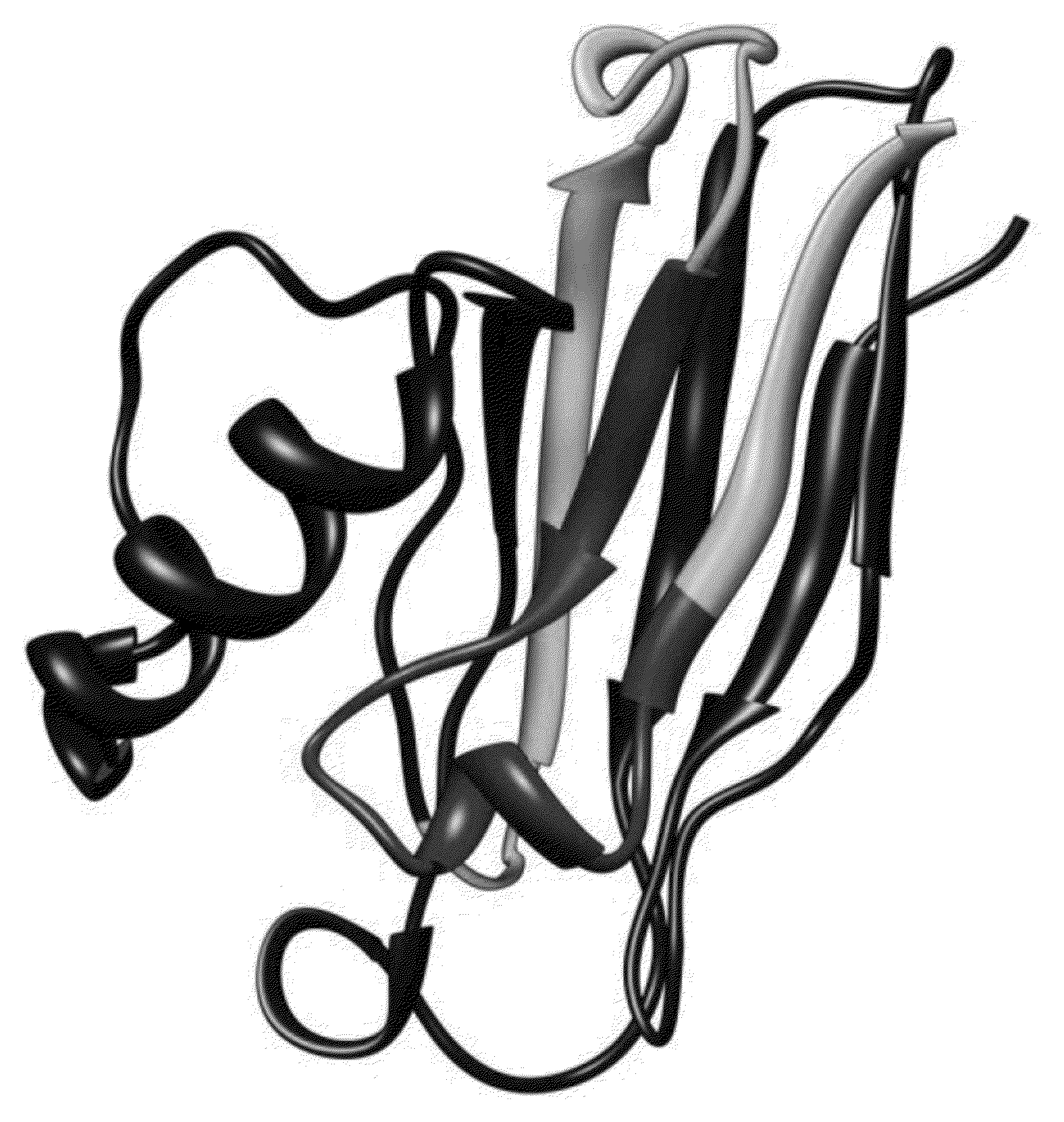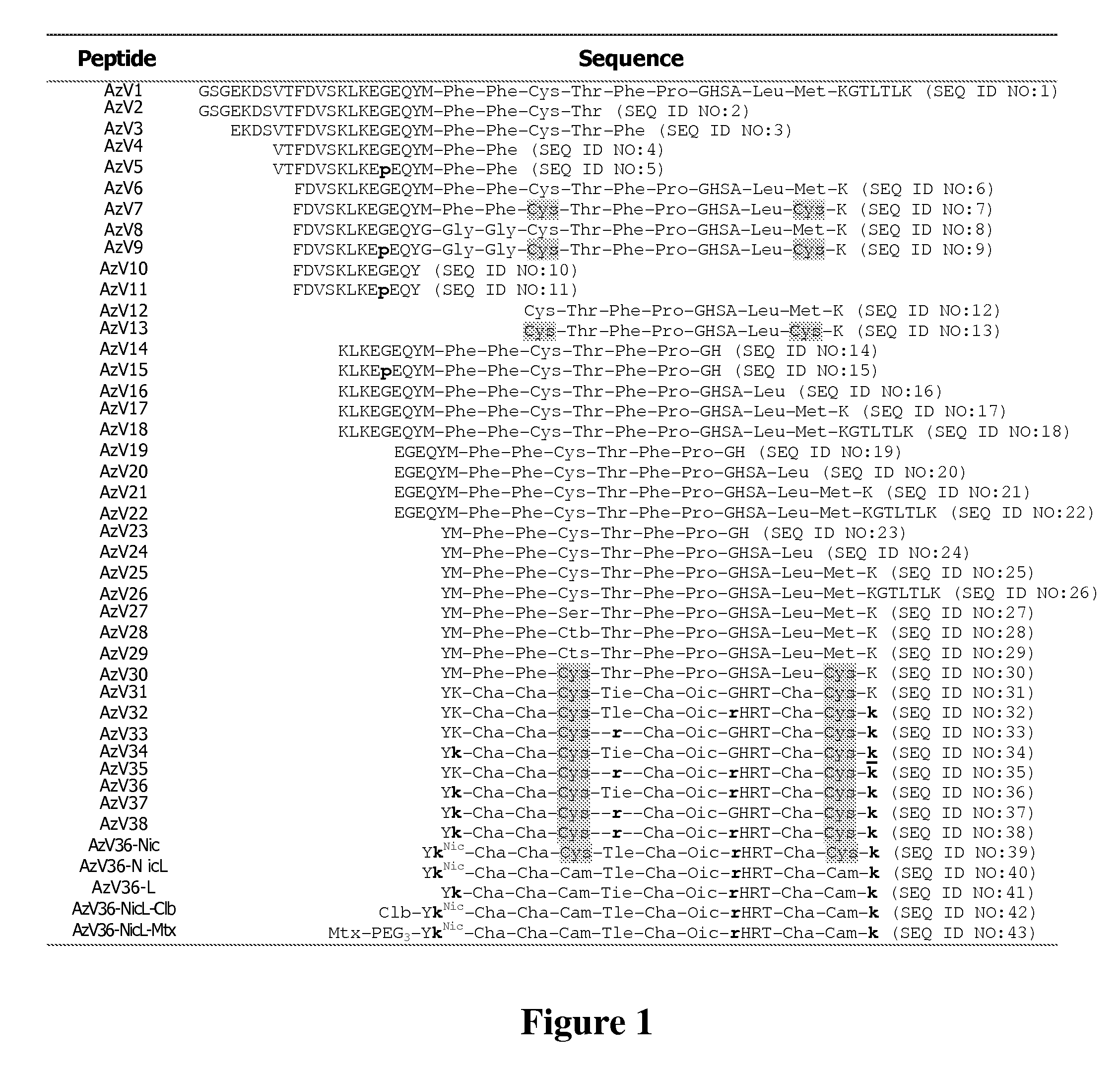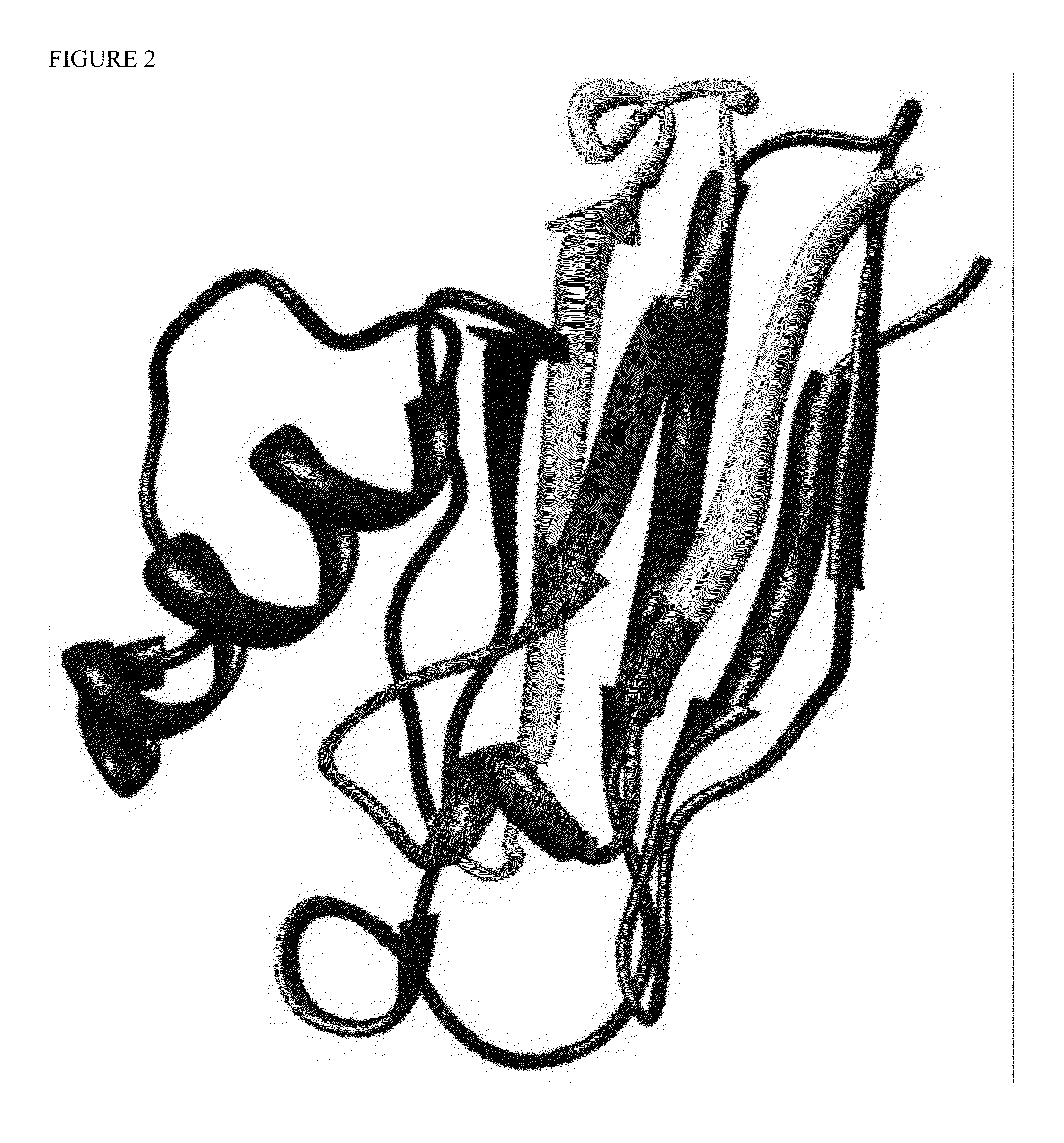Azuvirin Peptides
a technology of azuvirin and peptides, which is applied in the field of azuvirin peptides, can solve the problems of complex modulation, limited administration of radio-sensing compounds on the body to patients, and largely directed at the canonical ligand-receptor signaling pathway, so as to reduce the infection of the cell by the virus and achieve potent antiviral activity
- Summary
- Abstract
- Description
- Claims
- Application Information
AI Technical Summary
Benefits of technology
Problems solved by technology
Method used
Image
Examples
example 1
Radiotherapy of Lung Cancer Targeting Ephrin Receptors
[0071]Lung cancer treatment usually utilizes some form of radiotherapy. We sought to improve the efficacy of such treatment by exploiting targeted delivery of a model radiosensitizer (nicotinamide) to malignant tissues. The molecular target(s) we have chosen is ephrin receptors (Eph) which are overexpressed in many types of cancer, including lung cancer.
[0072]Molecular targeting was achieved utilizing a small peptide derived from the C-terminal portion of azurin that belongs to copper-containing redox proteins called cupredoxins and is capable of binding to ephrin receptors. We recently screened sub-library of peptides derived from C-terminal region of azurin and found several small compounds capable of binding selected ephrin receptors: EphA2, EphB2 and EphB4. One of such peptide, termed AzV-36, was chosen for our studies and subsequently conjugated with nicotinic acid via amide bond, shown in FIG. 1. The resulting peptide is li...
example 2
[0076]Lung cancer treatment usually utilizes some form of radiotherapy. We sought to improve the efficacy of such treatment by exploiting targeted delivery of a model radiosensitizer (nicotinamide) to malignant tissues. The molecular target(s) we have chosen is ephrin receptors (Eph) which are overexpressed in many types of cancer, including lung cancer. Molecular targeting was achieved utilizing a small peptide derived from the C terminal portion of azurin that belongs to copper-containing redox proteins called cupredoxins and is capable of binding to ephrin receptors. We recently screened a sublibrary of peptides derived from the C-terminal region of azurin and found several small compounds capable of binding selected ephrin receptors: EphA2, EphB2 and EphB4. One of these peptides, termed AzV36, was chosen for our studies and subsequently conjugated with nicotinic acid via amide bond. The resulting cyclic peptide AzV39-Nic and its linear counterpart AzV36-NicL are 15 residues long...
example 3
Enhancement of Lung Cancer Radiotherapy by Targeting Ephrin Receptors in a Murine Artificial Metastasis Model
[0087]Molecular targeting was achieved utilizing a small peptide derived from the C-terminal portion of azurin, a copper-containing redox protein (“cupredoxin”) that is capable of binding to ephrin receptors. We prepared and screened a sub-library of peptides derived from the C-terminal region of azurin and found several small analogues that bound ephrin receptors EphA2, EphB2, and EphB4. One such peptide, termed AzV36, was selected for conjugation with nicotinic acid via an amide bond to form AzV36-NicL. The resulting linear peptide contains 15 residues (including unusual and D-amino acids), is very stable in human serum, and can be easily manufactured.
[0088]AzV36-NicL conjugate was tested in vivo for its ability to radiosensitize Lewis lung carcinoma (LCC) in artificial metastasis and solid tumor engraftment models. The compound increased the efficacy of radiotherapy with t...
PUM
| Property | Measurement | Unit |
|---|---|---|
| Therapeutic | aaaaa | aaaaa |
| Cytotoxicity | aaaaa | aaaaa |
| Affinity | aaaaa | aaaaa |
Abstract
Description
Claims
Application Information
 Login to View More
Login to View More - R&D
- Intellectual Property
- Life Sciences
- Materials
- Tech Scout
- Unparalleled Data Quality
- Higher Quality Content
- 60% Fewer Hallucinations
Browse by: Latest US Patents, China's latest patents, Technical Efficacy Thesaurus, Application Domain, Technology Topic, Popular Technical Reports.
© 2025 PatSnap. All rights reserved.Legal|Privacy policy|Modern Slavery Act Transparency Statement|Sitemap|About US| Contact US: help@patsnap.com



